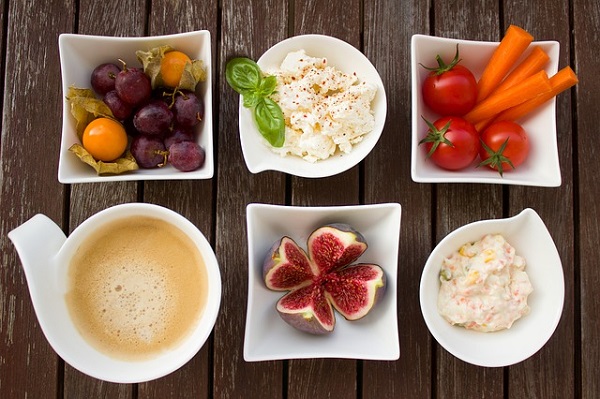
It's a brand new year, and now is the time to kickstart the journey to a healthier, happer you.
Healthy eating habits will play a major role in this, and nutritional therapist Heather Leeson (Glenville Nutrition) is here to guide the way with expert advice and tips.
The road to hell….
Most of us launch ourselves into January full of good intentions and laden down with healthy eating resolutions. While up to 75 percent of us can maintain this for a week, most of us have fallen off the healthy wagon by the end of January. We know from our experience in the clinic that focusing on too many goals and trying to make too many changes all at once just leads to a feeling of being overwhelmed.

Don’t set yourself up to fail
Instead of trying to completely overhaul your diet in one dramatic sweep, take small steps. Focus on one change at a time and make it stick. Make your goal as specific as possible. For example, rather than ‘drink more water’, your goal should be ‘drink seven glasses of water every day’. Write it down and stick it somewhere you can see it every day, e.g., on your mirror or on the fridge. Mindfully practice your new goal every day for one month, then review your progress and add in another goal. By that stage, your initial goal should have become a habit that you don’t even think about. By the end of 2017, you will have adapted 12 healthier habits and be reaping the rewards.

Stuck for ideas?
If you are not sure where to start, try our healthy eating plan for 2017:
| Month | Goal |
| January | Eat five portions of vegetables (or half of your plate at lunch and dinner) every day |
| February | Drink seven glasses of water every day |
| March | Switch from white to wholegrain bread, rice and pasta |
| April |
Limit treats to Fridays and Saturdays – or whatever days suit your schedule
|
| May | Eat fish at least three times per week |
| June | Stick to the correct portion sizes for pasta and cheese – or whatever foods are your portion-size downfalls |
| July | Plan your meals one week in advance |
| August | Have two vegetarian evening meals per week |
| September | Eat a small amount of healthy fats: e.g. nuts, seeds, avocado every day |
| October | Include a health snack mid-afternoon: e.g. apple and a palmful of nuts |
| November | Do 45 minutes of exercise, three to four times per week |
| December | Try one new healthy recipe every week/ fortnight |
Adapt these to suit you, but make sure that your goals are clear, simple and a change from what you are doing at the moment.

Some ideas to help you eat more vegetables in January:
| Breakfast | Lunch | Dinner |
| Omelette with spinach and mushrooms | Vegetable and lentil soup | Prawn stirfry with wholegrain rice |
| Poached egg with spinach and tomato | Greek salad with baked potato or sweet potato | Baked salmon with steamed mixed vegetables |
| Wholegrain bread with avocado and tomato | Rye bread with smoked mackerel, avocado and cucumber | Vegetable ratatouille with butterbeans or haloumi |
As a healthy snack, try vegetable sticks (carrots, pepper, celery, sugar snap peas, cucumber….) with hummus or another healthy dip.

Make it as easy for yourself as possible
- Keep frozen vegetables in your freezer
- Keep fresh salad in your fridge. While bagged salad is not always as nutritious as buying the lettuce heads, it’s much more nutritious than not eating salad at all
- Get organised and spend a few minutes planning your meals for the week ahead
My top tip
Roast a couple of trays of vegetables at the weekend and keep these in the fridge to add to salads, soups, omelettes and other dishes during the week. Most vegetables can be roasted, including peppers, courgettes, onions, aubergine, butternut squash, cauliflower, carrots, broccoli.








